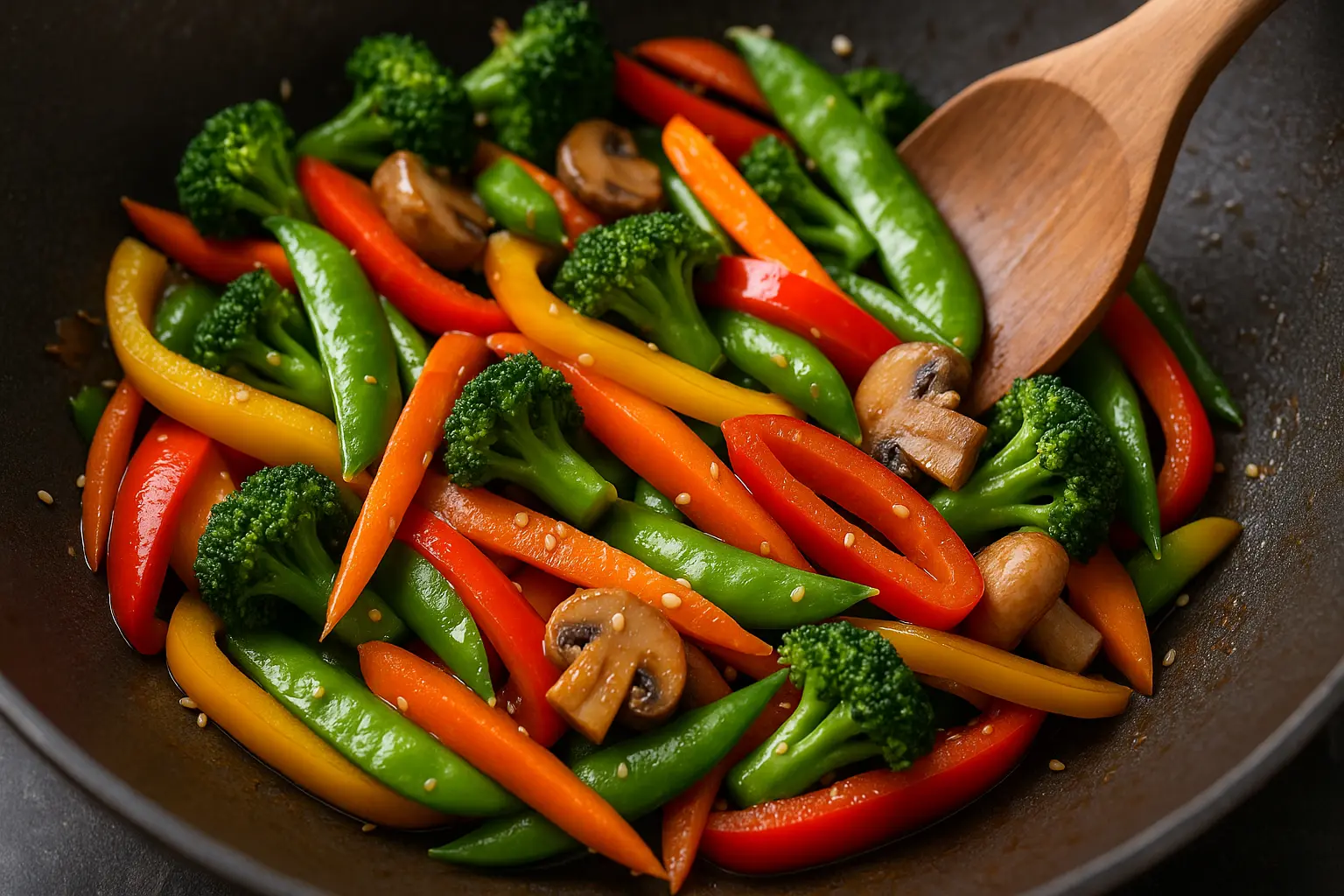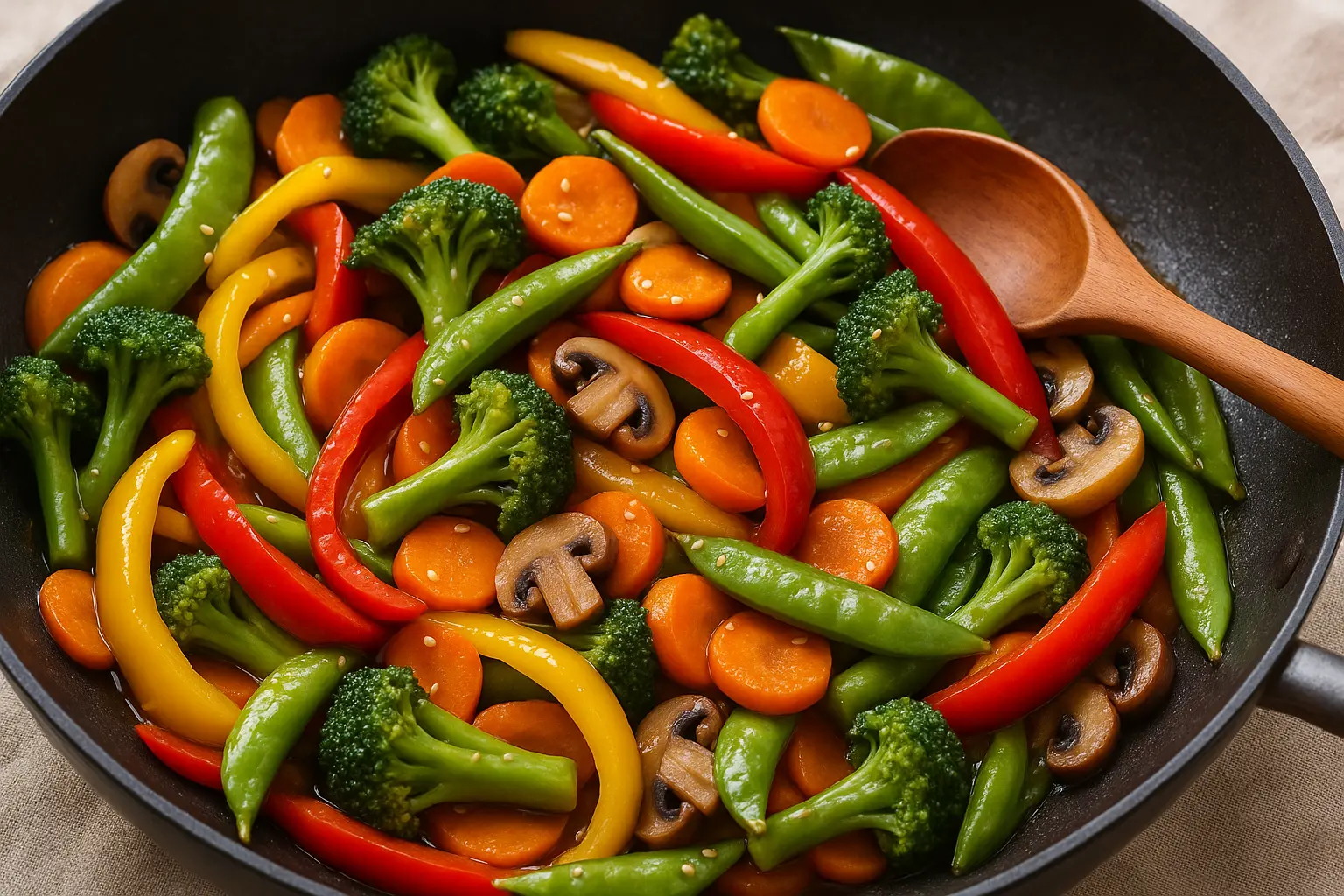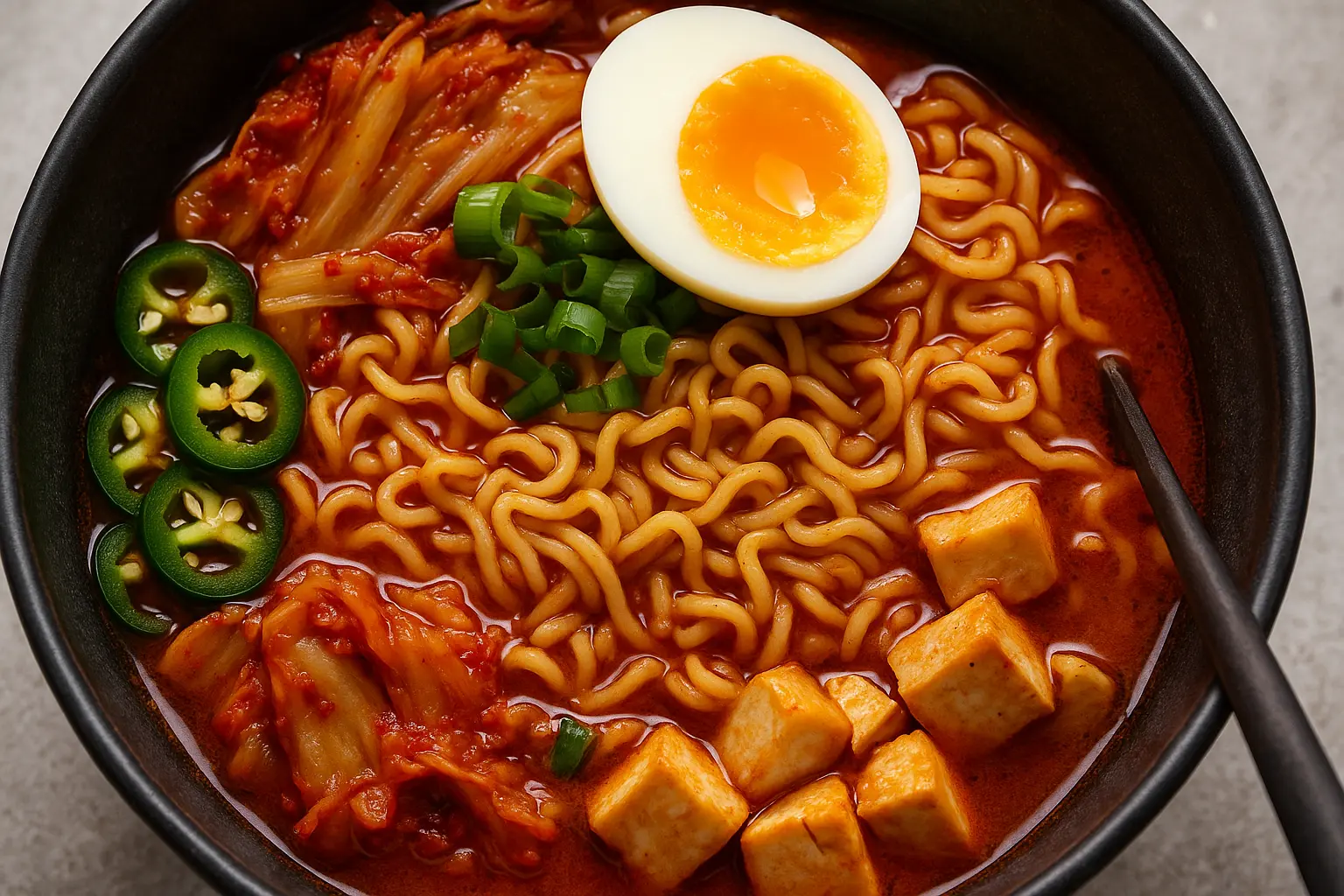When life gets hectic, the first thing that often slips is the quality of our meals. Busy schedules tempt us into ordering takeout or reheating frozen dinners. But here’s the good news: cooking a fresh, flavorful, and nutrient-packed meal doesn’t have to take forever. Enter the humble stir-fry — a stovetop wonder that combines speed, flexibility, and taste in one sizzling pan.
In this blog, we’ll explore the world of quick stir-fried veggies. You’ll get not only a base recipe that’s vegan, easy, and ready in under 20 minutes, but also variations, nutritional insights, ingredient swaps, cooking techniques, global twists, and practical tips to help you master weeknight stir-frying. By the end, you’ll have a versatile framework for endless quick dinners, all while keeping health and convenience at the center.

Why Stir-Fry is the Ultimate Busy Night Solution
- Fast cooking time: Most stir-fries come together in under 15–20 minutes.
- Flexible ingredients: Use whatever vegetables you have in the fridge.
- Nutritious: Quick cooking helps retain vitamins, minerals, and color.
- Minimal cleanup: A wok or large skillet is all you need.
- Customizable: Vegan, vegetarian, gluten-free, low-carb—stir-fries adapt to every diet.
For busy nights, it’s a meal that feels homemade but doesn’t eat into your evening.
The Base Recipe: Quick Stir-Fried Veggies
Ingredients (Serves 2–3)
- 2 tbsp neutral oil (canola, sunflower, or avocado oil)
- 2 cups broccoli florets
- 1 cup bell peppers, sliced (red, yellow, green)
- 1 cup carrots, thinly sliced on a bias
- 1 cup snap peas or green beans
- ½ cup mushrooms, sliced
- 2–3 cloves garlic, minced
- 1 tsp fresh ginger, grated
- 3 tbsp soy sauce (or tamari for gluten-free)
- 1 tbsp rice vinegar or lime juice
- 1 tbsp maple syrup or brown sugar (optional, for balance)
- 1 tsp sesame oil (for finishing)
- 1 tsp sesame seeds (optional, garnish)
- Fresh coriander or spring onions, chopped (optional, garnish)
Method
- Prep your vegetables: Wash, dry, and cut vegetables into uniform bite-sized pieces for even cooking.
- Heat oil: Place a wok or large skillet on high heat and swirl the oil.
- Aromatics first: Add garlic and ginger, stir-fry for 30 seconds until fragrant.
- Add harder veggies: Toss in broccoli and carrots. Cook for 2–3 minutes, stirring continuously.
- Add softer veggies: Add bell peppers, snap peas, and mushrooms. Stir-fry another 2–3 minutes until crisp-tender.
- Sauce it up: Stir in soy sauce, vinegar, and sweetener if using. Cook for 1–2 minutes.
- Finish: Drizzle with sesame oil, sprinkle sesame seeds, and top with coriander/spring onions.
- Serve immediately with steamed rice, noodles, or as a side dish.
Nutritional Profile
- Calories: ~220 per serving (without rice/noodles)
- Protein: 6–7g
- Carbs: 30–35g
- Fats: 9–10g (mostly healthy oils)
- Fiber: 7–8g
- Vitamins & Minerals: Rich in Vitamin A, C, K, folate, and potassium
This recipe is naturally vegan, dairy-free, and can be made gluten-free with tamari.
Mastering Stir-Fry Techniques
1. High Heat is Key
Stir-frying is all about quick cooking at high heat. A hot pan keeps veggies crisp and flavorful instead of soggy.
2. Order of Ingredients Matters
Start with aromatics (garlic, ginger), then harder vegetables (carrots, broccoli), and finish with softer ones (bell peppers, mushrooms).
3. Don’t Overcrowd the Pan
Too many veggies at once lower the heat and cause steaming instead of frying. Cook in batches if needed.
4. Sauce Timing
Add sauces toward the end to avoid burning and to coat veggies evenly.
5. Texture Balance
The best stir-fries balance crunch (snap peas, carrots) with soft elements (mushrooms, zucchini).
Variations and Flavor Boosts
Sauce Twists
- Spicy Garlic: Add chili flakes, sriracha, or fresh bird’s eye chili.
- Sweet & Sour: Mix pineapple juice, rice vinegar, and maple syrup.
- Peanut Satay: Stir in 2 tbsp peanut butter with soy sauce and lime.
- Teriyaki: Use soy sauce, mirin, and sugar for a Japanese-style glaze.
Vegetable Swaps
- Use cauliflower instead of broccoli.
- Try bok choy or Chinese cabbage for Asian flavors.
- Add zucchini or eggplant in summer.
- Use frozen mixed veggies when in a pinch.
Protein Additions (Still Vegan)
- Tofu: Pan-fried cubes add protein and texture.
- Tempeh: Nutty, firm, and nutrient-dense.
- Edamame: Quick-cooking protein boost.
- Seitan: For a chewy, meat-like bite.
Global Stir-Fry Inspirations
- Chinese-Style: Soy, ginger, garlic, Shaoxing wine.
- Thai-Style: Add lime juice, basil, chili, and a splash of coconut milk.
- Japanese-Style: Teriyaki sauce, sesame oil, shiitake mushrooms.
- Indian-Style: Toss in cumin, turmeric, and garam masala for a spiced version.
- Mexican-Style: Use corn, black beans, chili powder, and a squeeze of lime.
Meal Pairing Ideas
- With Rice: Jasmine, basmati, or brown rice.
- With Noodles: Soba, rice noodles, or whole wheat spaghetti.
- With Wraps: Stuff into tortillas or flatbreads for veggie wraps.
- As a Side: Pairs well with grilled tofu, curries, or soups.
Practical Tips for Busy Nights
- Pre-chop veggies in the morning or during the weekend.
- Batch sauces: Make a stir-fry sauce ahead of time to keep in the fridge.
- Use frozen veggies to cut prep time.
- One-pan cleanup: Stir-fries mean minimal washing up.
- Cook double for lunch leftovers.
Common Mistakes to Avoid
- Overcooking veggies until mushy.
- Adding too much sauce (it should coat, not drown).
- Cooking on low heat (leads to steaming).
- Ignoring balance—too many soft veggies can feel bland.
Stir-Fry as a Lifestyle
Making stir-fries part of your weekly rotation can save time, cut costs, and improve nutrition. They’re endlessly adaptable and can align with dietary needs like vegan, gluten-free, low-carb, or high-protein.
For families, stir-fries are also kid-friendly when paired with mild sauces. For singles, they’re ideal because portions can be scaled easily. And for meal-preppers, stir-fried veggies reheat well for quick lunches.
Conclusion
A stir-fry is more than just a quick dinner—it’s a method, a mindset, and a guarantee that even on your busiest nights, you can eat food that’s colorful, nourishing, and satisfying. Once you master the basics, the possibilities are endless: swap sauces, change veggies, add proteins, and bring global flavors into your kitchen in less time than it takes to order takeout.
So, the next time you’re tired, rushed, or uninspired, remember: a pan, a splash of oil, and a rainbow of veggies can give you a meal worth savoring.
Leave a comment
Your email address will not be published. Required fields are marked *




















